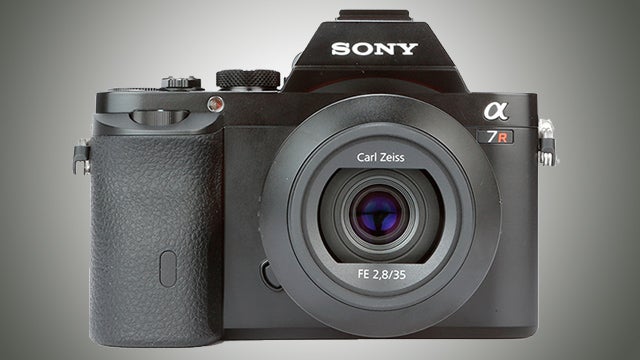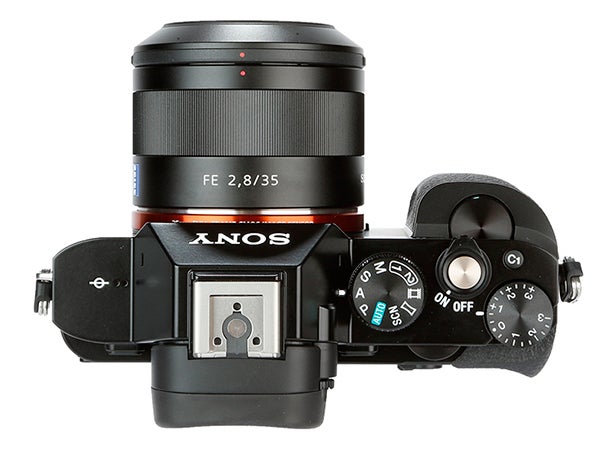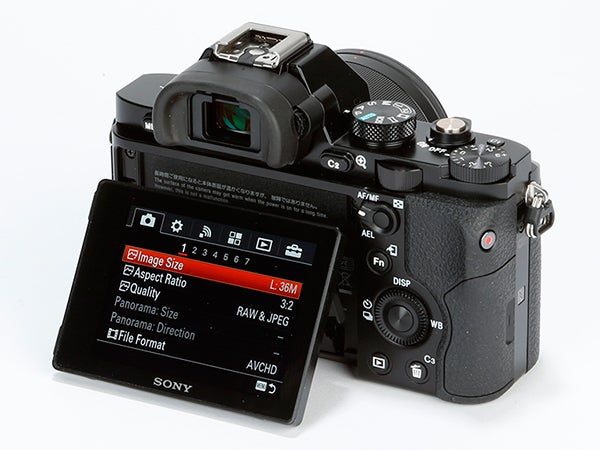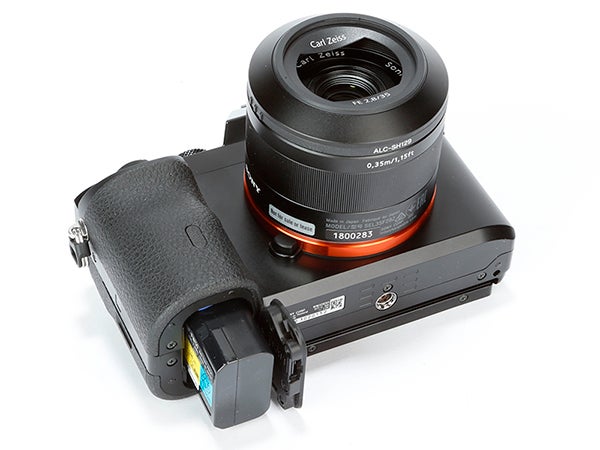Sony A7R Review - Design and Performance Review
Design and Performance
The world's smallest full-frame camera is also one of the best

Sections
- Page 1 Sony A7R Review
- Page 2 Design and Performance Review
- Page 3 Image Quality and Verdict Review
Sony A7R: Design
The body design of the Alpha 7R is where it shares the most in common with the Alpha 7. They aren’t so much similar as ‘basically identical’ – both unfussy, utilitarian and effective. The little ‘R’ on the front of the Alpha 7R’s body would be the only hope of a layman tasked with telling the difference between the two. It looks a lot like the Sony Cyber-Shot RX1, with an additional handgrip and pentaprism style hump for the viewfinder.

Much like its sensor, the body design gives the 7R a feel more closely resembling a DSLR than another CSC. The handgrip on the front is sizeable and feels robust to hold. This is further aided by the magnesium alloy build and the comprehensive sealing that protects against dust and inclement weather.
Control-wise, things are excellent. The arrangement feels very natural and smooth to operate, with a fairly standard configuration of buttons on the rear. On the top plate are a few dials for mode selection and exposure compensation, the shutter release button and a non-assigned button that you can customise to control whatever function you prefer.

Sony A7R: Performance
The major feature to talk about here is the AF. While it is, as we mentioned earlier, slower than the A7, it’s important to note that the contrast detect system used on the A7R, identical to the one seen in previous Sony cameras like the Sony A3000 is by no means bad. It’s perfectly sprightly until you get into low light, where it does struggle a little.
There is another way that the focusing on the A7R could be improved as well, and that’s with the addition of a touchscreen. The vari-angle LCD on the back of the camera is a nice touch, but it would be so much more useful if you could use it to manually select AF points – currently a rather tedious process on the A7R.

Elsewhere on the A7R, performance is excellent. Metering is reliable and accurate – you can set the camera to evaluative metering and simply let it take command of a scene for pleasing, even exposures. One feature that’s especially welcome is the obliquely named ‘Zebra’ mode, which displays black and white stripes across overexposed areas, allowing you to immediately flag up any danger of blowing out highlights. The usefulness of this function carries over to video capture.
Sony has launched a new range of Carl Zeiss optics specifically designed for the Alpha 7 and 7R – a 28-70mm f/3.5-5.6 OSS, a 35mm f/2.8, a 55mm f/1.8 and a 24-70mm f/4 OSS. Sony has announced plans to expand the range in the future but it is, for now, rather limited. Utilising an LA-EA4 adapter can allow you to use any of Sony’s older E-mount lenses with the Alpha 7R, however as these lenses were designed to work with smaller APS-C-sized sensors they won’t be able to reap the full benefits of the A7R’s enormous sensor (indeed, the A7R will automatically crop the image to a 16MP resolution when these lenses are used).


